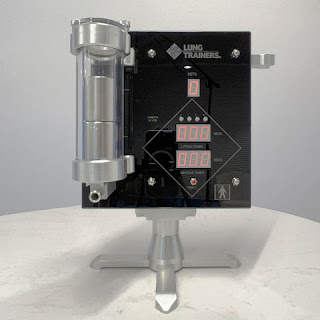Ideas for Good Trumpet Breathing Technique
Everybody needs to lung training; we all do it without thinking. When it comes to playing the trumpet, you have to think about your breathing consciously. Why is this? Many players just beginning tend to pick up the instrument and blow. This is all good, but they haven't considered needing more air because the body hasn't been physically stimulated to take in more stand naturally.
An excellent example of this is when you are running, the body needs more oxygen, so without thinking, the rate at which the person takes in the air is increased automatically due to the higher amount of CO2 in the blood. When playing the trumpet, the body will not increase the respiration rate because it does not detect any excess CO2 before you start to play. Your body's natural responses will ensure that it takes in as much air as it needs at that particular moment. This is where beginner players can make errors. They think they have taken an excellent full breath because their body's natural rhythm has played its part.

The problem with relying on your unconscious body to decide how much air you take in is that your lungs must know they are about to push air through a trumpet. When breathing out, typically, the air encounters much less resistance when traveling from the lungs and out through the mouth than when made through a trumpet. This is because the trumpet tubes are much smaller in diameter than the 'tubes' in your body, so you encounter more resistance from the mouthpiece. This means you must apply more pressure to push the air through the instrument faster to expel the same amount of air as you would when breathing normally. As a result, many players find that a normal breath leaves them running out of air very quickly because they have pushed that normal breath out much faster through the trumpet than they would have done when breathing naturally away from the instrument.
Getting a student to understand and realize breathing exercises for musicians is a fundamental and essential step. Much of the breathing technique is common sense, and hammering home to a student how important it is will make them aware of its importance. The best way to do this is through demonstration. Getting them to do this demonstrates how much air they think they have taken in instead of the air they have taken in. By topping up their lungs with the extra air, we are learning how to use the lungs' total capacity and not a smaller percentage of it. Once we have done this successfully, it is usually a good idea to repeat the process to reduce the number of extra 'top-up' breaths taken. This demonstration to a student is practical because you can prove to them with their bodies what they are doing instead of just telling them. The next time they play the trumpet, you can ask them to apply that breathing concept.
As long as you can observe that they are applying this idea, they can take an enormous breath. You'll know if they have through a variety of indicators. Firstly you can visually observe them taking a breath, their body will expand, and you will probably hear them inhale the air. When they start playing, the sound they produce is a big sign of whether they have taken in breath training device correctly. Incorrect breathing will leave the student with a minor sound, and they will stop playing very quickly because they have run out of air. More significant amounts of air will produce a much fuller sound because the extra pressure in the lungs will enable the air to leave the body more quickly and naturally without being forced out, which will vibrate the lips in a much more efficient way.
We will be able to play for longer without breathing, higher notes will be easier to play because there is enough air to vibrate the lips, and the sound will be fuller because the lip vibration is less forced. As with athletes, stamina will improve because the body will use extra oxygen when breathing correctly to replace carbon dioxide from the red blood cells generated by the physical exertion used to play the trumpet. Without this extra oxygen, there will be a more significant carbon dioxide build-up, particularly around the lip area, because there is no additional amount of oxygen in the blood to replace the surplus carbon dioxide and lactic acid generated by the lip and embouchure. Therefore good breathing techniques for musicians has a twofold positive effect on stamina.
Source URL :- https://sites.google.com/view/lungtrainerso02/home

Comments
Post a Comment